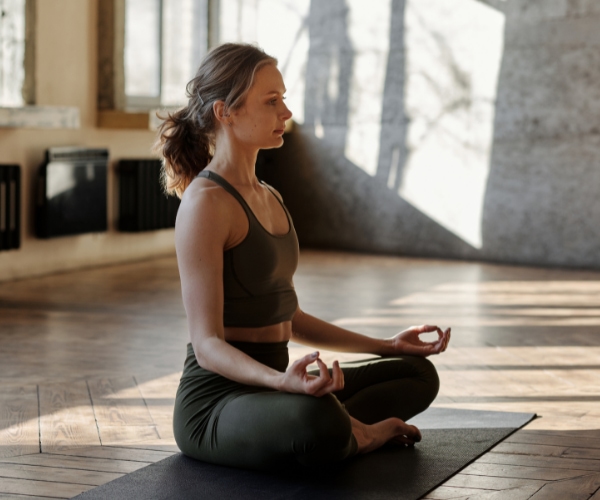
Jul 16 2021.
views 500Does one have to be trained in sitting cross-legged for forty-five minutes straight before qualifying to be a ‘meditator’? Should one be well versed with the Buddhist scriptures before embarking on a journey within? Or should one have read in-depth about the Vedic philosophy and the fundamentals of breathwork known as pranayama? The simple answer is a resounding no. All that is required – in my humble opinion - is a willingness to surrender. To surrender to our own breath and a curiosity to explore the magical inner world within; regardless of our experiences in the past or the religious beliefs of the present. If you look at the true meaning of the Pali word for meditation – Bhavana - it refers to cultivating the mind. And that is a skill available to anyone willing to practice and reap the benefits regardless of religious beliefs, age, background, and experience. You can continue to follow any religion in the world, and still benefit from meditation; with a mind that is at ease while handling a family crisis; a mind that is clear and focused during an interview; even experience a deeper connection with Divinity by having cultivated the practice of surrender.

Meditation can take many forms including but not limited to focusing on breath, watching the processes of the body, sitting with sensations, using affirmations or Gatha, surrendering through prayer or conversations with a Higher Power.
If you are intrigued, below is a practical guide to a simple meditation to try within 10 minutes. As having your eyes closed is encouraged, you may read through once and return to the text if needed during the session. The benefits may range from an accentuated sense of calmness to deep experiences of inner healing. Meditation is a beautiful vessel that can return us to that inherent centre of serenity we all carry within.
Preparation
First step - be hydrated. Get into something comfortable. When the basic physical needs are met – the body is comfortable - we minimise reasons to be distracted during the sitting. Find a comfortable place. Maybe you are on a couch or bed, seated or lying down. Make sure you have back support.
When Distracted
If you find yourself distracted - monkey mind at play - be gentle in acknowledging the nature of your mind. There is no need to criticise or judge ourselves. We slowly take a deep breath with the intention of releasing the distraction and exhale returning our awareness to the practice of observing. Then we celebrate with a little smile – for you have successfully recognised a distraction, released it, and returned. You can return to this step throughout the practice - whenever you notice yourself distracted.
Step 1
Gently allow your awareness to shift inward. You can start by exploring the breath and its journey for a few moments – the rise and fall of the belly, the subtle airflow on your upper lip, or the beating of your heart. Be patient with this process and be curious about what you may find.
Step 2
Take a slow, deep inhale, filling your entire body, and sigh out through an open, relaxed mouth. Repeat and this time as you inhale, hold your breath – just for a moment past your comfort level – and exhale through the mouth. Repeat for three deep breath cycles, continue for a maximum of five if that is available to you today.
Step 3
Return to normal breathing and give yourself a moment to check within your body. How did that feel? Extend this inner scan to the rest of the body. How does my belly feel? Legs? Can I feel the lower back? Explore for yourself. When you notice your mind is distracted, follow instructions at the top.
Step 4
We now shift our focus back to our breath and take a deep inhale through the nose, and exhale through the mouth. We repeat for four rounds filling up our lungs a little bit more with each inhale and allow the belly to soften a little bit more with each exhale.
Step 5
Allow your breath to return to normal. Recall the image of a little kitten or the image of a little being you have a simple sense of love or kindness towards. Allowing this little being to get comfortable in your lap, have this kind wish towards it - “may you be happy and at ease, just as you are”. Allow yourself to soften into this kind prayer, even let a gentle smile spread across your face. Extend the same softness, love and affection to yourself. Repeat out loud "may I be happy and at ease just as I am". Take a deep breath and release this wish to the universe with a smile.
Close the practice with Gratitude
To conclude you are invited to give gratitude to the blessings of a Divine Being you believe in, an Enlighted Master you follow, the Abundance of Mother Earth or simply to the availability of the air you breathe. Thank you for joining me on this sitting. Remember there is only one bad meditation, and that is the one you didn't do.
The author is a certified meditation teacher and can be found at www.instagram.com/raana.yoga
By Natasha Yatawara
0 Comments